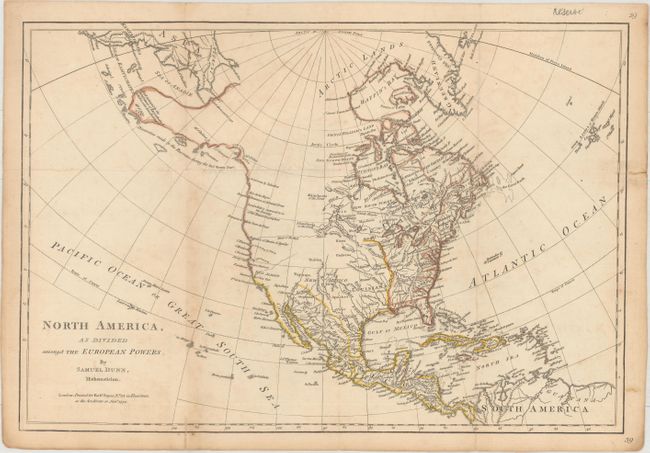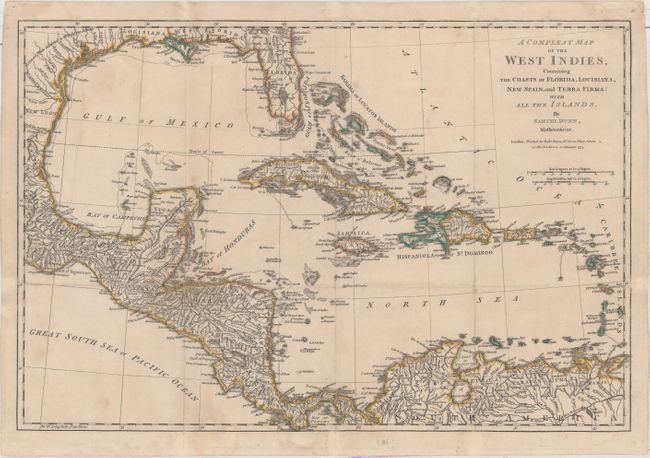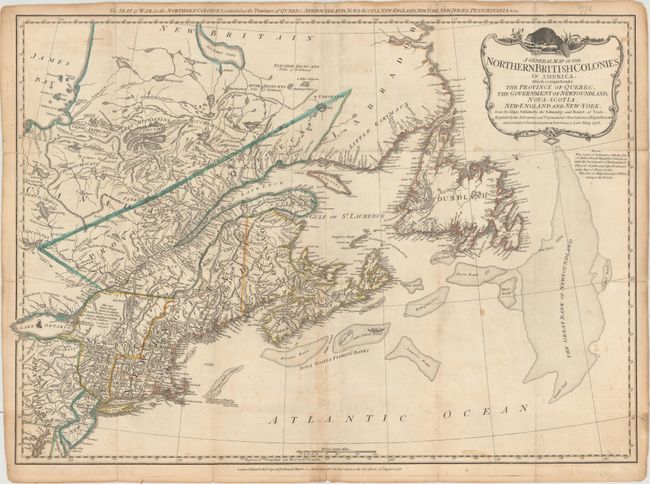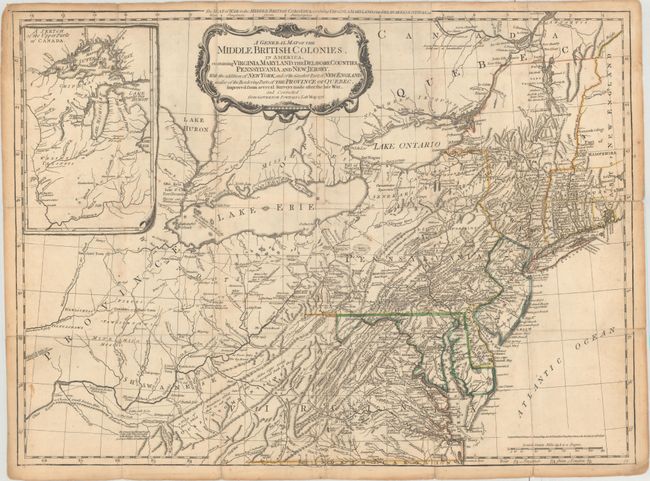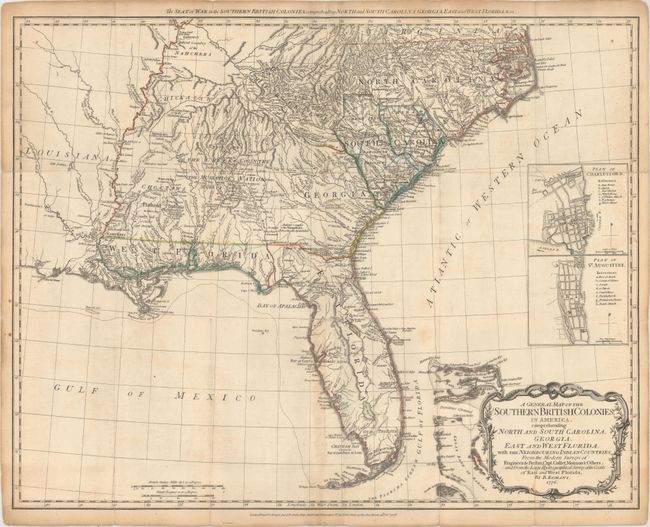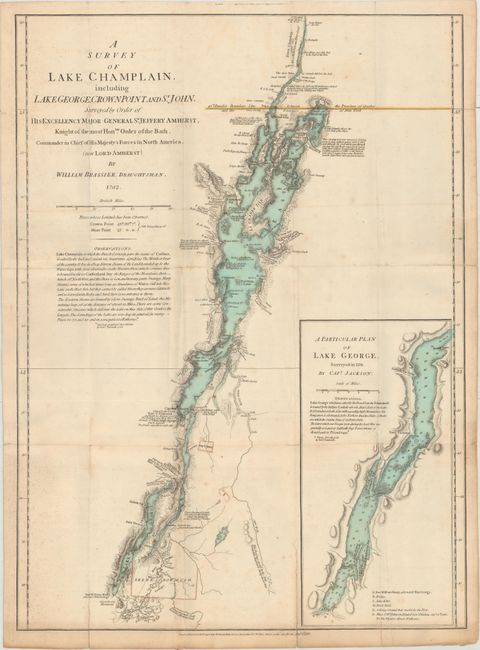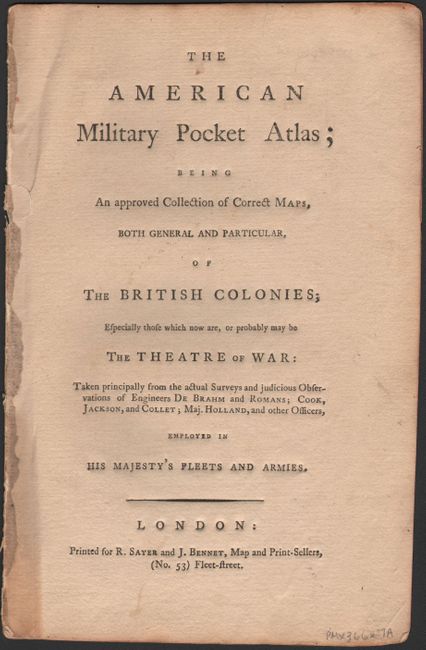Catalog Archive


Auction 157, Lot 99
A Significant Atlas of the American Revolution
"[Disbound] The American Military Pocket Atlas; Being an Approved Collection of Correct Maps, Both General and Particular, of the British Colonies; Especially Those Which Now Are, or Probably May Be the Theatre of War...", Sayer & Bennett
Subject: North America
Period: 1776 (published)
Publication:
Color: Hand Color
Size:
See Description
Download High Resolution Image
(or just click on image to launch the Zoom viewer)
(or just click on image to launch the Zoom viewer)
